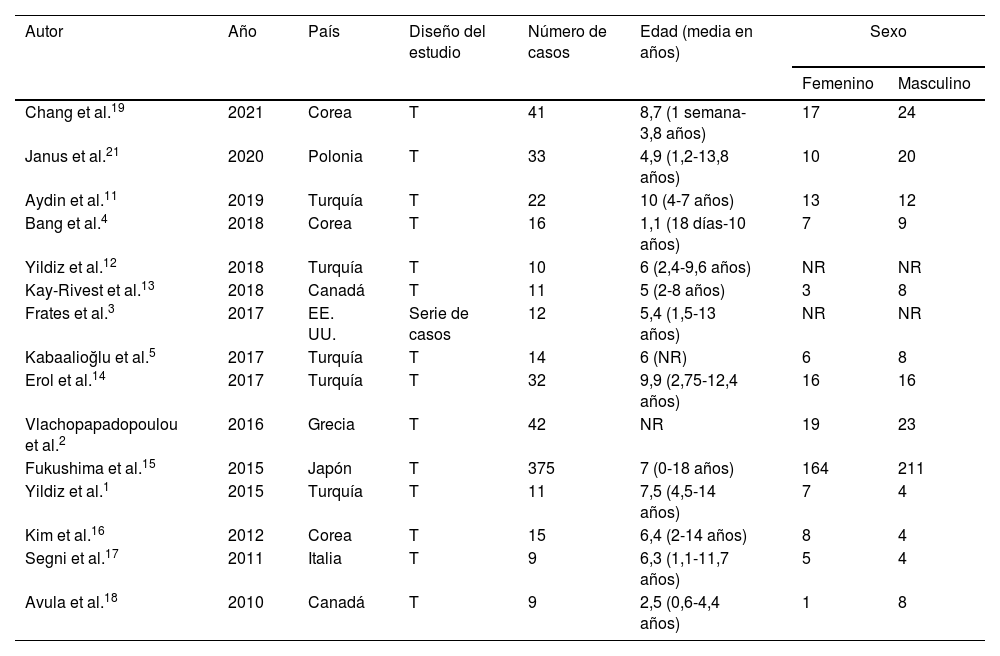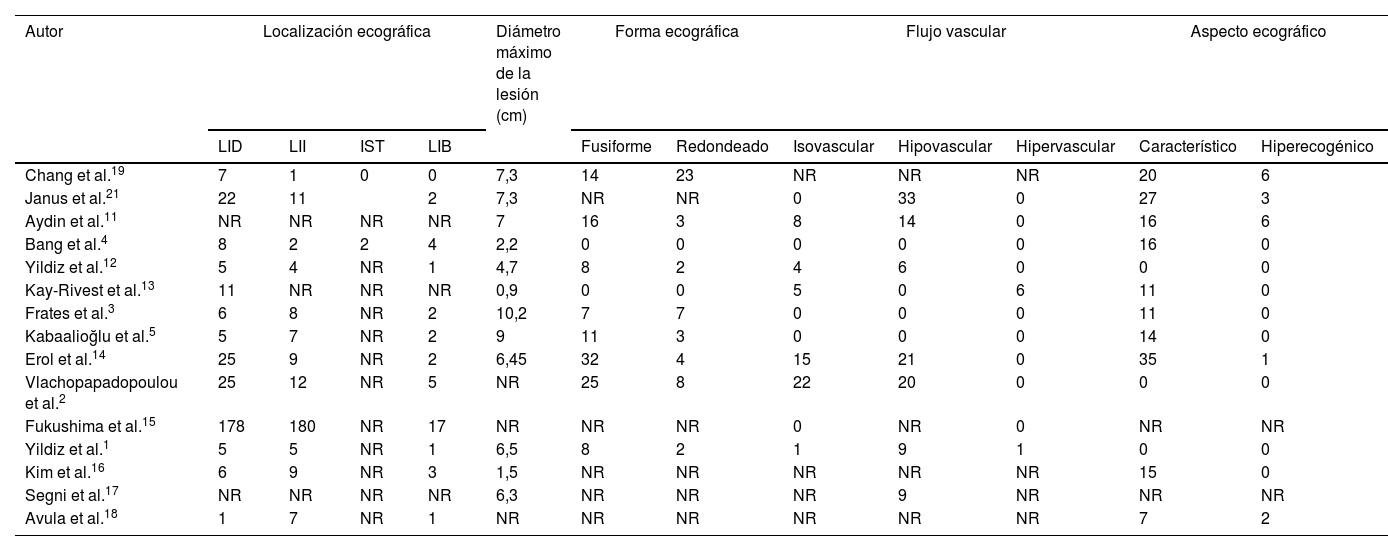El tejido tímico ectópico intratiroideo (TTEI) es una entidad benigna y poco frecuente que se incluye en el diagnóstico diferencial de los nódulos tiroideos en la población pediátrica. Dada la baja prevalencia del TTEI, su diagnóstico puede resultar complejo, si bien es esencial para evitar posibles intervenciones quirúrgicas innecesarias. Este estudio tenía por objeto revisar la documentación médica sobre las características ecográficas del TTEI. Para ello, llevamos a cabo una búsqueda en Ovid, PubMed y la Biblioteca Virtual en Salud.
Se incluyó a un total de 619 pacientes con una edad media de 6,2 años. En 556 niños y adolescentes, el TTEI se localizó en la parte inferior de ambos lóbulos tiroideos. Se notificó la forma ecográfica en 173 pacientes, siendo la forma fusiforme la más representativa. El aspecto del TTEI se notificó en 121 pacientes, observándose un patrón hipoecogénico con múltiples focos ecogénicos en su interior. El diámetro medio de la lesión fue de 5,53 mm, y la ecografía Doppler indicó un patrón hipovascular en el 56% de las lesiones.
En conclusión, si bien el TTEI es una entidad poco frecuente, debe tenerse en cuenta en el diagnóstico diferencial de los nódulos del cuello en la población pediátrica y debe estudiarse y seguirse mediante ecografía a fin de evitar una intervención quirúrgica innecesaria.
Intrathyroidal ectopic thymic tissue (IETT) is an indulgent, unusual entity and is part of the differential diagnosis of thyroid nodules in the pediatric population. Because of the low prevalence of IETT, the diagnosis may be difficult. Awareness of this diagnosis is definitive to avoid surgical interventions. The aim of this study was to review the literature on the echographic characteristics of IETT. We conducted a search of Ovid, PubMed and the virtual health library.
A total of 619 patients with a mean age of 6.2 years old were included. IETT was located in the lower portion of both of the thyroidal lobes in 556 children, the echographic shape was reported for 173 patients, with the fusiform shape as the most representative, the appearance of the IETTs was reported for 121 patients, the most common was the hypoechogenic pattern with multiple internal echogenic foci. The average lesion diameter was 5.53mm, and Doppler findings reported a hipovascular pattern in 56% of the lesions.
In conclusion, IETT is an infrequent entity; nonetheless, it must be considered in the differential diagnosis of neck nodules in children and should be study and follow with echography to avoid unnecessary surgery.
Artículo
Comprando el artículo el PDF del mismo podrá ser descargado
Precio 19,34 €
Comprar ahora










